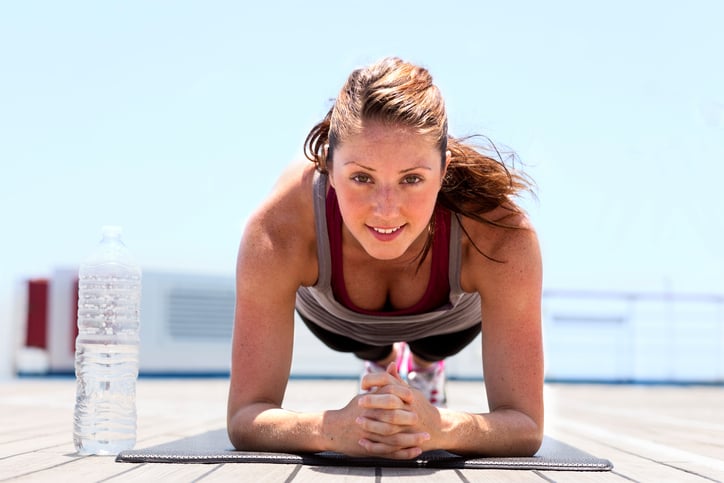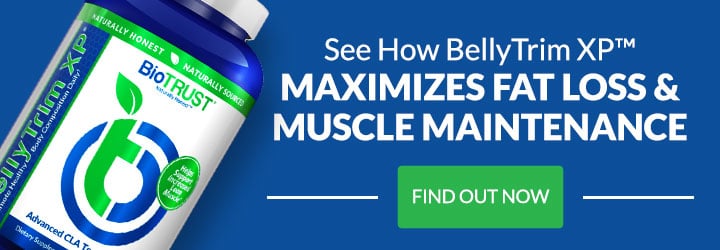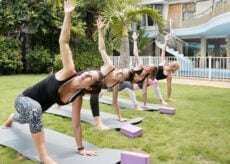Are Some Exercises Too Hard? — Try These Exercise Modifiers

If you are new to working out, or if you have been sidelined due to an injury, there may be limitations or restrictions in terms of your mobility.
Even if you are a fitness professional and need to work on mastering your skills, the following exercise modifiers are the perfect workarounds to 4 exercises commonly included in a standard workout program.
Our Favorite Exercise Modifiers
1. Pushups
One of the staples of a good strength training routine are pushups. A pushup is a combination of chest, shoulder and triceps muscles, combined with core stability. This compound movement requires some basic strength, but with these exercise modifiers, you can build overall strength and gradually work up to the real thing.
Push-ups are great for both men and women, however I would recommend women pay particular attention to these as they not only tone and tighten your tummy and help to improve upper body strength, but they have been known to give the pectorals a little boost.
For starters, you can forego the plank position associated with a traditional push up and opt for balancing on your knees instead of toes. This is one of the many fantastic pushup exercise modifiers, and will allow you to gradually work up to a traditional push-up.
Pushups on your knees
- Begin with your knees and palms on the ground. Palms should be shoulder width apart.
- Be mindful to engage your glutes while keeping your back in a neutral position
- Slowly bend your elbows until your arms are at a 45 degree angle, keeping your body in a straight line.
- When your forearms become vertical with the ground, slowly push yourself back up to the starting position.
Chest Press
- Lie on a bench with a dumbbell in each hand and your feet flat on the floor.
- Push the dumbbells up so that your arms are directly over your shoulders and your palms are up.
- Be mindful to keep your abdominals engaged and your chin pulled into your chest.
- Slowly lower the dumbbells down until your elbows are slightly below your shoulders.
- Slowly push the weights back up, keeping your shoulder blades on the bench.
You can get a similar workout with a barbell or dumbbells. The important thing to remember with either is to use a medium width grip/distance and push the weights straight toward the ceiling. You may gradually increase the weight and repetitions as you get more comfortable with the movement.
Planks
- While lying face down on the floor, balance your body on your forearms and toes.
- Engage your core and keep your body in a straight line from ears to toes with no sagging or bending.
- Be mindful to keep your head relaxed and looking at the floor.
- Hold this position for 10 seconds to start.
- Over time work up to 30, 45 or 60 seconds.
Since pushups require significant core strength, adding these to your upper body routine will help to build up your overall strength as you work towards a traditional push-up.
2. Pullups
Can’t do a pullup? You’re not alone! The pullup may be one of the most difficult exercises to master. Just because you can’t do a full-fledged pullup now, doesn’t mean you never will, especially if you use these simple exercise modifiers:
Band-assisted Pullup
- Loop an exercise or resistance band around the pullup bar.
- Place one foot or knee into the band.
- Perform a pullup as normal.
- Step down carefully and release yourself from the bar.
- Step one foot out first to avoid snap backs.
Assisted Pullup Machine
- Securely set the pin on the desired weight (I would recommend 20 pounds less than your current weight).
- Stand on the side platforms, and hold onto the outer handles.
- Lift one knee, and place it on the padded knee rest.
- Tightly hold onto the handles as you place your second knee onto the knee rest and be prepared to hold yourself up.
- Keep your abs engaged, spine neutral, and shoulders pressed down and back.
- Pull yourself up as far as possible.
- Slowly release down until your arms are almost straight.
Lat Pulldown
- Begin in a seated position facing the machine.
- Position the knee pads on the machine so that your knees fit snugly under the pads.
- Hold the bar with your hands shoulder width apart with your palms facing away from you (pronated).
- Place your feet flat on the floor, keep your torso straight, and extend your arms.
- Pull your shoulder blades down and back, with your arms straight.
- Bend your arms and pull your elbows down to your sides.
- Pull the bar as close as you can to the top of your collar bone, pause, and then return the bar to the starting position with arms straight.
3. Squats
When performed correctly, squats can help provide strength and stability to your lower region. However if you are experiencing pain or discomfort, or have knee or joint pain, the following exercise modifiers of the traditional squat can help reduce pain associated with this movement, and provide you with all the same benefits.
Wall Squats
- Begin by standing with your back against a flat wall.
- Using the wall to help support your back, gradually bend your knees, extending them forward, as you slide into a squat position.
- Make sure your knees stay behind your toes, and only slide down as far as you comfortably can.
- Once you have slid down as far as you are able, gradually slide back up.
Chair Squats
- Begin by standing with your back to a chair.
- Slowly bend your knees as if you are attempting to sit down in the chair.
- Just as your bottom hovers the seat, pause, and return to an upright position.
- For added balance you may extend your arms either in front of you or to your sides.
*If needed you may briefly sit down each time to take the pressure off your knees, or you can use a higher or lower chair depending on your range of motion. As you become more advanced, you can swap out the chair for an exercise or stability ball.
Quarter Squats
- Stand with feet about hip or shoulder-width apart, toes at a natural angle forward or slightly out.
- Bend your knees and slowly extend your bottom out as though you’re about to sit in a chair. Your knees should stay behind your toes.
- Squat about a quarter of the way down (standard squats are when your quads are parallel to the ground).
- Be mindful to keep your feet flat on the floor throughout the entire exercise, and keep your back flat. You may extend your arms to your sides or in front of you if needed for balance.
- Slowly stand back up, concentrating on squeezing your glutes as you return to your vertical position.
Running
Is running tough on your knees or joints? Do you have difficulty with your breathing? Below are some fantastic exercise modifiers that will get your heart rate up, and burn some calories in the process.
- Jump Rope— Try short sessions of 50 repetitions at a time. You can even do these between your sets while weight training for an amazing HIIT workout.
- Elliptical— The elliptical may seem easy and fun, but believe it or not, it can be just as effective as running without the jarring to your joints.
- Biking— Try the recumbent bicycle to put less pressure on your knees.
- Swimming— This is the ultimate no pressure workout. Because you’re suspended in water, your joints should get a nice break from the usual exercises but your cardiovascular system will appreciate the tough workout.
- Stair Climber— Don’t let the name fool you. While this is great alternative to running, if you have knee or ankle issues, use with caution.
- Walking— Believe it or not, walking can be a very effective fat burning and conditioning workout. Aim for a fast pace and gradually work up to a light jog. For more advanced folks, you can even add some arm or ankle weights.
Whether you are limited by strength, injury, or equipment, now you have the exercise modifiers you need to build up your strength and improve your health and wellness. Once you have mastered these moves, you can gradually begin to incorporate traditional pullups, pushups, squats and running into your workouts.
Whatever fitness activity you choose to do, there are always exercise modifiers or workarounds so you do not have to miss your daily workout.
If you have any questions about any of the exercises discussed in this article, or if you are looking for a workaround for your favorite exercise, please leave a comment and we can provide detailed instructions on a modifier to suit your activity level.







